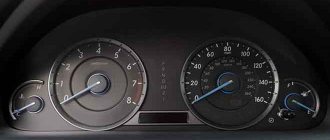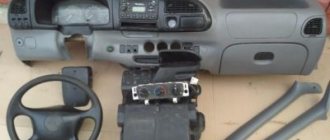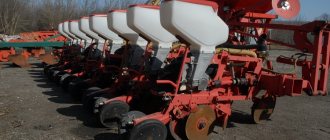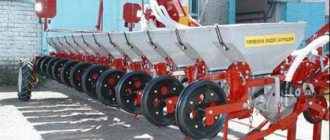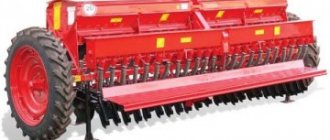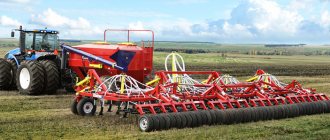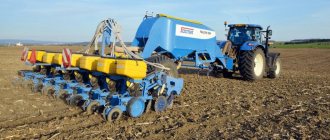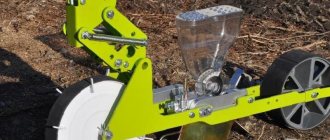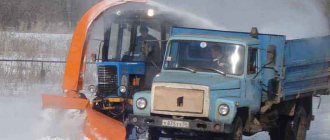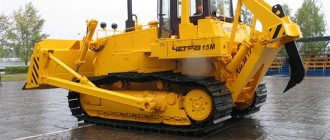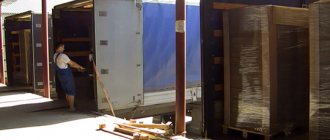History of the creation of the SUPN-8 seeder
In 1874, entrepreneurs from England, Thomas and Robert Elvoroti, on rented premises, founded a workshop in Elisavetgrad (today Kirovograd) for the production, repair and adjustment of imported seeders.
Later, due to increased demand, the brothers began building their own plant to produce horse-drawn seeders. The production of butter churns, crushers, mills and other equipment was also mastered.
By 1917, the plant already employed more than 7 thousand people. A large range of agricultural equipment for tillage, seeders, dryers and grain crushers was produced. Between 1874 and 1917, 50 awards were won at international agricultural exhibitions. There were representative offices in 52 cities, in Russia and abroad, for example in New York and London.
After the revolution of 1917, the enterprise was nationalized and renamed.
During the Second World War, during the fighting, it was almost completely destroyed. After the liberation of Kirovograd, its intensive restoration began and by the end of 1944, 2.5 hundred seeders had already been manufactured, and ammunition was also manufactured.
By 1950, the plant was almost completely restored. The designers have created 45 different types of sowing equipment, and the production level has exceeded the military level.
Over the next 25 years, the plant constantly increased and improved production. By the end of the 70s, the plant produced up to 100 thousand sowing machines. At the same time, the construction of new workshops and the re-equipment of the enterprise are taking place, thanks to this there is capacity for the production of a new model of the SZ-3.6 seeder.
In the 80s, 90 thousand seeders rolled off the assembly line every year. In the 90s, 12 new sowing complexes and other equipment were introduced.
In 2003, the company changed its name to the Ukrainian “Chervona Zirka”, which translated into Russian sounds as before “Red Star”. In 2004, the company updated its model range. Many seeders developed back in the mid-70s, like the hero of our story, the SUPN-8 seeder, are giving way to more modern counterparts.
Technical characteristics of the SUPN-8 seeder
- The method of aggregation with a tractor is mounted;
- Weight – 1180 kg;
- Productivity – no more than 5 ha/h;
- Required traction class – from 1.4
- Capture – 5.6 m;
- Row spacing – 0.7 m;
- Operating speed – from 6 to 10 km/h;
- Seed depth – from 40 to 120 mm;
- The seeding rate is from 25 to 150 thousand units per hectare.
Operating principle of the SUPN-8 seeder
The mechanism of the fertilizer sowing apparatus, and specifically the sowing discs and spring augers, are driven by a transmission that is driven by the rotation of the support wheels.
Transmission of the support-drive wheel.
The seeder cover has a horseshoe-shaped cavity in which a vacuum is created. This is done using a fan driven by a hydraulic motor powered by the hydraulic system of the tractor. The degree of vacuum in the cavity is controlled using a valve with a membrane pressure control mechanism.
Seeds from the intake hopper are sucked onto the holes of the seeding disc located in the discharged area and sent to the discharge area. Excess stuck seeds are removed using a special fork installed in the intake hopper.
When the seeds in the holes of the disk move from the discharged zone to the zone of normal atmospheric pressure, they come unstuck and fall into the furrow formed by the heel of the coulter.
Spring augers with right and left winding transport mineral fertilizers from a separate bunker to the funnels. Dispersers installed at the entrance funnels distribute the flow through oscillatory movements, evenly distributing fertilizer in the furrow.
With the help of harrows, furrows with applied fertilizers and seeds are covered with soil. Press wheels run along closed furrows, compacting the soil above the furrows and creating conditions for moisture to be drawn towards them.
Device
The seeder consists of:
- frames with automatic hitch lock and footboard
- two support-drive pneumatic wheels
- sowing sections
- centrifugal fan with hydraulic drive
- disk fertilizer sowing devices
- hydrated markers
- “Kedr” type seeder operation control systems
- transmission mechanism.
Each section includes:
- pneumatic seeder
- skid-shaped combination opener
- spring-loaded moldboard hider and pressure rod
- compaction roller with atmospheric pressure tire and train.
On the suction pipe of the fan there is a head with mouthpieces, to which air ducts from all seeding devices are connected.
1 — fertilizer sowing apparatus; 2 - fan; 3 — seeder operation control system; 4 - drawstring; 5 - train; 6 — skating rink; 7 — hider; 8 - pneumatic sowing device; 9 - opener; 10 — counter-drive shaft; 11 — marker; 12 — wheel; 13 and 15 - output and input shafts of the gearbox; 14 - gearbox; 16 — automatic coupling lock.
The control system for the operation of the SUPN-8 pneumatic seeder receives power from a 12 V DC network. The system includes:
- remote control in the tractor cabin
- amplifier block on the main beam of the frame
- seeding sensors in all seeding units in the free fall zone of seeds
- level sensors at the bottom of the bins of two sowing sections
- connecting cable harnesses.
On the front panel of the remote control there are:
- green lamp (lights up when the system is turned on)
- red lamp (lights up when the seed level in the hopper drops below the permissible level)
- indicator lamp (indicates the number of the failed channel)
- power switch
- system check button
- sound alarm.
The amplifier block converts pulse signals coming from seeding sensors into DC voltage.
The seed sensor consists of:
- amplifier
- an electric lamp and a photocell that generates electrical impulses during periodic illumination
Level sensor from:
- electric lamps
- a photoresistor that changes resistance when illuminated.
The transmission mechanism of the SUPN-8 seeder provides 45 gear ratios (0.209−1.206) on the disc shafts of the seeding devices.
It is made in the form of two double-shaft chain gearboxes and a chain transmission system driven by support wheels.
Structure of the SUPN-8 seeder
The frame of the SUPN-8 seeder is equipped with an automated hitch. In the working position, the frame with all mechanisms rests on two pneumatic wheels, which, in addition to their supporting function, act as a drive for the mechanism of grain and fertilizer sowing devices.
A fan is installed in the center of the frame, creating a discharge zone in the system; it is driven by a hydraulic motor powered by the tractor’s hydraulics. Two folding markers are attached to the edges of the frame. At the rear of the frame, 8 sowing units are installed on special suspensions.
Such a section consists of a housing with a container for seeds, it contains a pneumatic sowing mechanism, and the section also has a coulter, a roller, a harrow and a train. The section body is divided into two cavities by a sowing disc with holes around the entire circumference. One of the cavities is filled with seeds, and air is pumped out of the other using a fan through a special air duct.
Seeds, trying to get into the cavity with a rarefied atmosphere, are sucked to the holes of the sowing disk and transported to the bottom of the housing, to an area where there is no vacuum. There, the seeds fall out of the disc holes and fall into the furrow made by the coulter.
Seeding unit with coulter, harrow and chain train.
A scraper installed in the cavity with seeds cleans the disk from excess, adhered grains, which ensures single seed sowing. Seeding discs for the SUPN-8 seeder are supplied in two sets, with 14 and 22 holes, the diameter of which can be 3 and 5.5 mm.
Features of the seeder model
Multi-section seeder SUPN 8.
The SUPN-8 model, shown in the photo, after the improvement, differs from the standard SPU. Regardless of the decision to buy a new or used unit, the price is affordable even for small farms. The seeder frame in the area of the trailing mechanism has been strengthened, the chain drive has been modified and modernized, and the manufacturer has replaced the hydraulic fan with a rotor-type device.
The drive gears are now made of hardened metal rather than cast iron as before. The pressing wheels are equipped with bearings for smooth gliding. The seeder marker uses a rubber bumper, and the discs have angle adjustment. The chain of the sowing mechanism is protected in the form of casings made of durable plastic. The equipment can be installed on YuMZ, T-70S, MTZ-80/82.
This model of sowing unit, new or used, can be used in almost all regions, with the exception of mountain farming areas. The equipment is suitable for installation on class 1.4 tractors. The unit can be equipped with 6 or 8 sections and has a processing width of 4.2 and 5.6 m, respectively. When choosing a unit, you should pay attention to its ability to evenly distribute seeds in the furrow, on which future yield directly depends.
Device
Diagram of the main components of the seeder.
The main components of SUPN-8, shown in the photo above, are:
- frame connecting to the traction unit;
- seeding units mounted on the front of the chassis;
- sowing device, which is installed on each sowing unit;
- coulter and bracket installed on the sowing module;
- sowing and fertilizer units operating from drive wheels and equipped with a fan to create pressure;
- supports, thanks to which the entire apparatus, to facilitate the filling procedure with fertilizers and seeding material, is brought to a horizontal position.
Seeder diagram
Scheme of the working process of the SUPN 8 seeder: 1 - support-drive wheel; 2 – gear mechanism; 3 – automatic coupling lock; 4 – timber frame; 5 – fertilizer sowing apparatus; 6 – suspension; 7 – bunker; 8 – section body; 9 – depth regulator; 10 – trace former; 11 – hiders; 12 and 15 – rollers; 13 – seed sowing apparatus; 14 and 17 – openers; 16 - clod remover
The equipment consists of the following elements:
- Seed container
- Seeding device
- Opener
- Closers
- Press roller
- Plume
- Parallelogram frame
- Sowing disc
- Drop fork
- Tedder
The drive units of fertilizer and seed feeders, sowing sections, two markers, a centrifugal fan, four disc-scraper fertilizer sowing mechanisms, control devices for seeding and seed level, and footrests for the operator of the SUPN-8 service are mounted on the frame.
The working section of the SUPN-8 row-crop seeder includes: a suspension mechanism, a coulter, a pneumatic device with a perforated disk for sowing, a device for adjusting the depth of the coulter, consisting of a quick-release cotter pin and a link, a roller, containers for planting material, a train and sealers.
Question answer
Operation of the SUPN-8 seeder
Before operation, it is necessary to configure the seeder for the crop being sown and the method of moving the tractor along the marker. The sowing depth is regulated by the position of the coulter, which is changed by moving the cotter pin into the holes of the link. Changing the position by one hole changes the depth by 1 cm.
The seeding rate can be adjusted by changing the seeding disc, as well as by selecting the gear ratio of the drive mechanism, which has 45 modes. A complete list of modes with descriptions is presented in the operating instructions.
The SUPN-8 seeder is used by many large and small farms, despite the fact that it has been out of production for several years. It has its pros and cons; the farmers themselves will tell us more about them.
Reviews:
- I have been sowing SUPN-koi sunflowers for a long time, the seeds are imported and small, so the most common problem in my practice is that it sucks in 2-3 grains at a time, and as a result there is a strong overconsumption of seed material, and the seedlings are very thickened. We tried to make homemade discs with a hole size of 2.5 mm, so the grains began to get stuck in them, and sifting was obtained. In general, it’s a hassle and not a job.
- My opinion is that if the seeder frame is not deformed and does not have mechanical damage to the aluminum parts, everything else can be repaired even in the field, using welding and a grinder. If the opener is worn out, you can weld it on, but it’s easier to replace it; it costs a penny. The lack of vacuum will be corrected by replacing the linings and bushings. There is nothing fundamentally broken in this unit!
So let’s conclude that the SUPN-8 seeder, due to its affordability, simplicity and maintainability, is quite suitable for a beginning farmer. Of course, if it had met all the requirements of modern farmers, it would not have been discontinued. But for its time it was quite a worthy unit.
Its main drawback is its inability to work with small seeds; farmers complain about this problem most often. The scraper does not cope with its duties, missing several stuck grains, resulting in a large overconsumption of seeds. Or screenings occur due to them getting stuck in the holes of the disk.
Types of seeders and their design
Types of equipment differ in size, design and sowing methods. If large seeders are suitable for large farms, then in the garden a attachment for a walk-behind tractor is sufficient.
Trailed/mounted
According to the method of attachment to the equipment, trailed and mounted seeders are divided. The former require less productive machines to operate. For example, a tractor with a power of 45–60 hp. With. or seeding devices Kinze 3000, MT-8, YP-1630F, which have a power of 80 hp. With. They are aggregated with an eight-row YP-825 130 liter seeder. With.
Attachments are used to work with productive machines of at least the second class and tractors with high power (250–320 hp and 200–220 hp).
Mechanical/pneumatic
Corn sowing occurs in a dotted manner. In this case, seeders have a pneumatic or mechanical mechanism.
Mechanical seeders are gradually becoming obsolete and disappearing into oblivion; in many countries they have already been discontinued. To change the types of seeds, you have to completely dismantle the working panel and adjust the row spacing in a new way. There is simply not enough time for such a procedure.
Pneumatic corn seeders have a more advanced design, which includes:
- lump remover;
- furrow filler;
- compaction wheel;
- wedge tip;
- skid opener.
Her labor productivity is much higher with minimal time investment. Fertilizers are added along with the seeds. Among the significant disadvantages are:
- high price of the seeder;
- insufficiently effective work on problematic grounds;
- impossibility of use in fields where there are a lot of roots in the ground.
Manual/for walk-behind tractor/for special equipment
Manual devices are one of the most popular for sowing corn in small areas. Used in medium and small farms. They are characterized by high productivity: 0.5 hectares are sown in one day, provided that the land is prepared. They operate using a seed disc or plate at the bottom of the seed tank.
Seeders for walk-behind tractors allow seeding to be done in even steps in each row. To use them, holes are made in advance at a selected distance. Use devices only on loose and soft soils. Do not use on clay and heavy soil. The simple design is too heavy and bulky.
Seeders for special equipment are multifunctional. With their help, several types of corn are sown at once, simultaneously covering the maximum number of rows, the seeds are distributed over the marked holes, they are fertilized and covered with soil. This equipment has large dimensions and weight; it is used only on tractors and other machines with a power of 45 to 320 hp. With.
Buying a used SUPN-8 seeder: features of choice
When buying a SUPN-8 seeder secondhand, let’s pay attention to the following details:
- The frame should not have significant damage or deformation;
- Worn openers can be a subject of bargaining, even if only a small one;
- No visible damage to the drive mechanism;
- Seals in air duct connections;
- Wear of seeding disc bushings.
Prices for seeders in working condition start from 50 thousand rubles and above, depending on the condition. I would like to note that the manufacturer warns that SUPN-8 has been discontinued. But at the same time, the network is full of offers for the sale of supposedly new seeders of this brand; these are handicraft units, and you should not trust the quality of such products.

